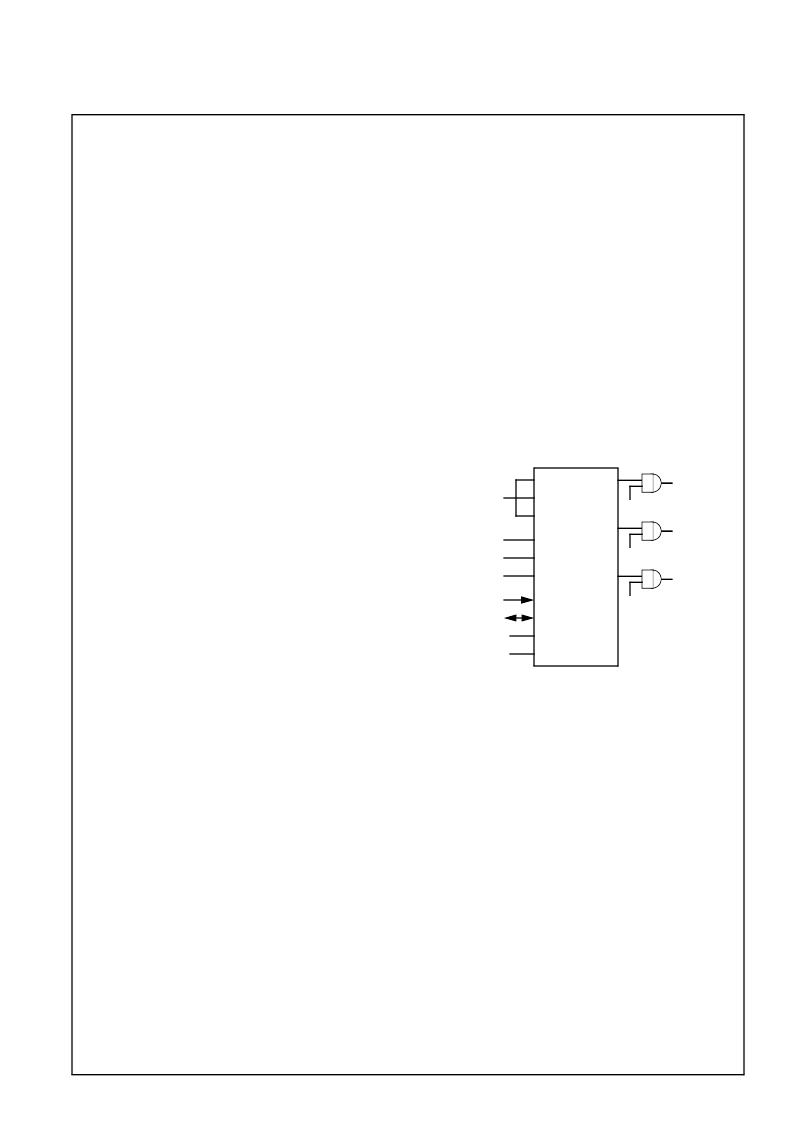- 您現(xiàn)在的位置:買賣IC網(wǎng) > PDF目錄376337 > SC1100 (National Semiconductor Corporation) Geode⑩ Information Appliance On a Chip PDF資料下載
參數(shù)資料
| 型號: | SC1100 |
| 廠商: | National Semiconductor Corporation |
| 英文描述: | Geode⑩ Information Appliance On a Chip |
| 中文描述: | Geode⑩信息家電在一個芯片 |
| 文件頁數(shù): | 129/348頁 |
| 文件大小: | 2063K |
| 代理商: | SC1100 |
第1頁第2頁第3頁第4頁第5頁第6頁第7頁第8頁第9頁第10頁第11頁第12頁第13頁第14頁第15頁第16頁第17頁第18頁第19頁第20頁第21頁第22頁第23頁第24頁第25頁第26頁第27頁第28頁第29頁第30頁第31頁第32頁第33頁第34頁第35頁第36頁第37頁第38頁第39頁第40頁第41頁第42頁第43頁第44頁第45頁第46頁第47頁第48頁第49頁第50頁第51頁第52頁第53頁第54頁第55頁第56頁第57頁第58頁第59頁第60頁第61頁第62頁第63頁第64頁第65頁第66頁第67頁第68頁第69頁第70頁第71頁第72頁第73頁第74頁第75頁第76頁第77頁第78頁第79頁第80頁第81頁第82頁第83頁第84頁第85頁第86頁第87頁第88頁第89頁第90頁第91頁第92頁第93頁第94頁第95頁第96頁第97頁第98頁第99頁第100頁第101頁第102頁第103頁第104頁第105頁第106頁第107頁第108頁第109頁第110頁第111頁第112頁第113頁第114頁第115頁第116頁第117頁第118頁第119頁第120頁第121頁第122頁第123頁第124頁第125頁第126頁第127頁第128頁當(dāng)前第129頁第130頁第131頁第132頁第133頁第134頁第135頁第136頁第137頁第138頁第139頁第140頁第141頁第142頁第143頁第144頁第145頁第146頁第147頁第148頁第149頁第150頁第151頁第152頁第153頁第154頁第155頁第156頁第157頁第158頁第159頁第160頁第161頁第162頁第163頁第164頁第165頁第166頁第167頁第168頁第169頁第170頁第171頁第172頁第173頁第174頁第175頁第176頁第177頁第178頁第179頁第180頁第181頁第182頁第183頁第184頁第185頁第186頁第187頁第188頁第189頁第190頁第191頁第192頁第193頁第194頁第195頁第196頁第197頁第198頁第199頁第200頁第201頁第202頁第203頁第204頁第205頁第206頁第207頁第208頁第209頁第210頁第211頁第212頁第213頁第214頁第215頁第216頁第217頁第218頁第219頁第220頁第221頁第222頁第223頁第224頁第225頁第226頁第227頁第228頁第229頁第230頁第231頁第232頁第233頁第234頁第235頁第236頁第237頁第238頁第239頁第240頁第241頁第242頁第243頁第244頁第245頁第246頁第247頁第248頁第249頁第250頁第251頁第252頁第253頁第254頁第255頁第256頁第257頁第258頁第259頁第260頁第261頁第262頁第263頁第264頁第265頁第266頁第267頁第268頁第269頁第270頁第271頁第272頁第273頁第274頁第275頁第276頁第277頁第278頁第279頁第280頁第281頁第282頁第283頁第284頁第285頁第286頁第287頁第288頁第289頁第290頁第291頁第292頁第293頁第294頁第295頁第296頁第297頁第298頁第299頁第300頁第301頁第302頁第303頁第304頁第305頁第306頁第307頁第308頁第309頁第310頁第311頁第312頁第313頁第314頁第315頁第316頁第317頁第318頁第319頁第320頁第321頁第322頁第323頁第324頁第325頁第326頁第327頁第328頁第329頁第330頁第331頁第332頁第333頁第334頁第335頁第336頁第337頁第338頁第339頁第340頁第341頁第342頁第343頁第344頁第345頁第346頁第347頁第348頁

Revision 1.1
129
www.national.com
G
Core Logic Module
(Continued)
DMA Page Registers and Extended Addressing
The DMA Page registers provide the upper address bits
during DMA cycles. DMA addresses do not increment or
decrement across page boundaries. Page boundaries for
the 8-bit channels (Channels 0 through 3) are every 64 KB
and page boundaries for the 16-bit channels (Channels 5,
6, and 7) are every 128 KB.
Before any DMA operations are performed, the Page regis-
ters must be written at the I/O Port addresses in the DMA
controller registers to select the correct page for each DMA
channel. The other address locations between 080h and
08Fh and 480h and 48Fh are not used by the DMA chan-
nels, but can be read or written by a PCI bus master. These
registers are reset to zero at POR. A write to the Low Page
register clears the High Page register, for backward com-
patibility with the PC/AT standard.
For most DMA transfers, the High Page register is set to
zeros and is driven onto PCI address bits AD[31:24] during
DMA cycles. This mode is backward compatible with the
PC/AT standard. For DMA extended transfers, the High
Page register is programmed and the values are driven
onto the PCI addresses AD[31:24] during DMA cycles to
allow access to the full 4 GB PCI address space.
DMA Address Generation
The DMA addresses are formed such that there is an
upper address, a middle address, and a lower address por-
tion.
The upper address portion, which selects a specific page,
is generated by the Page registers. The Page registers for
each channel must be set up by the system before a DMA
operation. The DMA Page register values are driven on
PCI address bits AD[31:16] for 8-bit channels and
AD[31:17] for 16-bit channels.
The middle address portion, which selects a block within
the page, is generated by the DMA controller at the begin-
ning of a DMA operation and any time the DMA address
increments or decrements through a block boundary. Block
sizes are 256 bytes for 8-bit channels (Channels 0 through
3) and 512 bytes for 16-bit channels (Channels 5, 6, and
7). The middle address bits are driven on PCI address bits
AD[15:8] for 8-bit channels and AD[16:9] for 16-bit chan-
nels.
The lower address portion is generated directly by the DMA
controller during DMA operations. The lower address bits
are output on PCI address bits AD[7:0] for 8-bit channels
and AD[8:1] for 16-bit channels.
BHE# is configured as an output during all DMA opera-
tions. It is driven as the inversion of AD0 during 8-bit DMA
cycles and forced low for all 16-bit DMA cycles.
5.2.6.2
The Core Logic module contains an 8254-equivalent Pro-
grammable Interval Timer (PIT) configured as shown in
Figure 5-7. The PIT has three timers/counters, each with
an input frequency of 1.19318 MHz (OSC divided by 12),
and individually programmable to different modes.
Programmable Interval Timer
The gates of Counter 0 and 1 are usually enabled, how-
ever, they can be controlled via F0 Index 50h. The gate of
Counter 2 is connected to I/O Port 061h[0]. The output of
Counter 0 is connected internally to IRQ0. This timer is typ-
ically configured in Mode 3 (square wave output), and used
to generate IRQ0 at a periodic rate to be used as a system
timer function. The output of Counter 1 is connected to I/O
Port 061h[4]. The reset state of I/O Port 061h[4] is 0 and
every falling edge of Counter 1 output causes I/O Port
061h[4] to flip states. The output of Counter 2 is brought
out to the PC_BEEP output. This output is gated with I/O
Port 061h[1].
Figure 5-7. PIT Timer
PIT Shadow Register
The PIT registers are shadowed to allow for 0V Suspend to
save/restore the PIT state by reading the PIT’s counter and
write only
registers. The read sequence for the shadow
register is listed in F0 Index BAh (see Table 5-29 on page
166).
CLK0
CLK1
CLK2
GATE0
GATE1
GATE2
XD[7:0]
A[1:0]
IOW#
IOR#
I/O Port 061h[1]
I/O Port 061h[0]
IRQ0
I/O Port
061h[4]
PC_BEEP
1.19318 MHz
WR#
RD#
OUT0
OUT1
OUT2
F0 Index 50h[4]
F0 Index 50h[6]
F0 Index 50h[3]
F0 Index 50h[5]
相關(guān)PDF資料 |
PDF描述 |
|---|---|
| SC1100UFH-233 | Geode⑩ Information Appliance On a Chip |
| SC1100UFH-266 | Geode⑩ Information Appliance On a Chip |
| SC1100UFH-300 | Geode⑩ Information Appliance On a Chip |
| SC11372 | MOBILE RADIO ANALOG PROCESSOR |
| SC11372CQ | MOBILE RADIO ANALOG PROCESSOR |
相關(guān)代理商/技術(shù)參數(shù) |
參數(shù)描述 |
|---|---|
| SC11004 | 制造商:未知廠家 制造商全稱:未知廠家 功能描述:300 / 1200 Bit Per Second Modem |
| SC1100UFH-233 | 制造商:NSC 制造商全稱:National Semiconductor 功能描述:Geode⑩ Information Appliance On a Chip |
| SC1100UFH-266 | 制造商:ADV-MICRO-DEV 功能描述: |
| SC1100UFH-266 B1 | 制造商:Advanced Micro Devices 功能描述:I3O IC OPN |
| SC1100UFH-300 | 制造商:NSC 制造商全稱:National Semiconductor 功能描述:Geode⑩ Information Appliance On a Chip |
發(fā)布緊急采購,3分鐘左右您將得到回復(fù)。